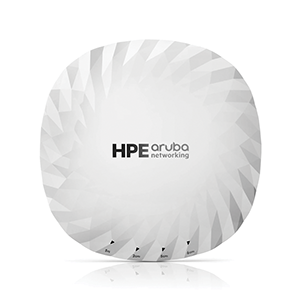

It is easy to get swept up in the jargon of new technology releases where everything is faster, smarter, and more efficient, but what matters in the real world is whether these advances solve actual problems. With Wi-Fi 7 (802.11be), we are finally looking at a standard that was built not just for more devices, but for the new way networks are used: always on, always mobile, and increasingly business-critical.
As South Africa’s technology landscape adapts to growing digital demands, from smart campuses to connected healthcare and automation-heavy manufacturing, the arrival of Wi-Fi 7 presents a timely evolution, and HPE Aruba Networking’s new 700 Series access points provide a glimpse into what Wi-Fi 7 can deliver.
Beyond speed: What Wi-Fi 7 changes
The most obvious benefit of Wi-Fi 7 is speed. Thanks to support for 320 MHz channels and 4K QAM modulation, the new standard effectively doubles the throughput of Wi-Fi 6E.
It is not just about raw performance. Multi-Link Operation (MLO) allows for simultaneous use of different frequency bands, like 5 GHz and 6 GHz, to increase reliability and reduce latency. That makes a major difference in environments where stability is just as important as speed. For instance, think of real-time applications like AR/VR, remote operations, or mission-critical video calls.
The new 700 Series range (that includes the AP-725, AP-735, and AP-755) is Aruba’s Wi-Fi 7 portfolio designed for the real world complexity of enterprise wireless environments. Here is how they differ:
• AP-725 is the entry point: compact, efficient, and ideal for general-purpose deployments like classrooms or office floors.
• AP-735 steps up with more performance and coverage, aimed at higher density environments like conference venues or retail floors.
• AP-755 is the top-end unit, designed for ultra-dense, high-capacity environments such as stadiums, hospitals, or university campuses.
All models are equipped with tri-band radios (2,4 GHz, 5 GHz, and 6 GHz), multi-gigabit uplinks, and built-in IoT support for Zigbee and Bluetooth. Crucially, they also integrate directly into the Aruba Central AI-powered management platform, giving IT teams real-time visibility and simplified provisioning.
The 700 Series makes the network not just faster, but smarter. Aruba’s AI-driven features can detect anomalies, suggest fixes, and even automate common tasks, thereby reducing response times and avoiding disruptions before they affect end users.
While Wi-Fi 6 and 6E are still very much relevant, organisations building for scale, edge deployments, or high client-density networks should be actively looking at Wi-Fi 7 as part of their roadmap.
For more information contact Duxbury Networking,

© Technews Publishing (Pty) Ltd | All Rights Reserved